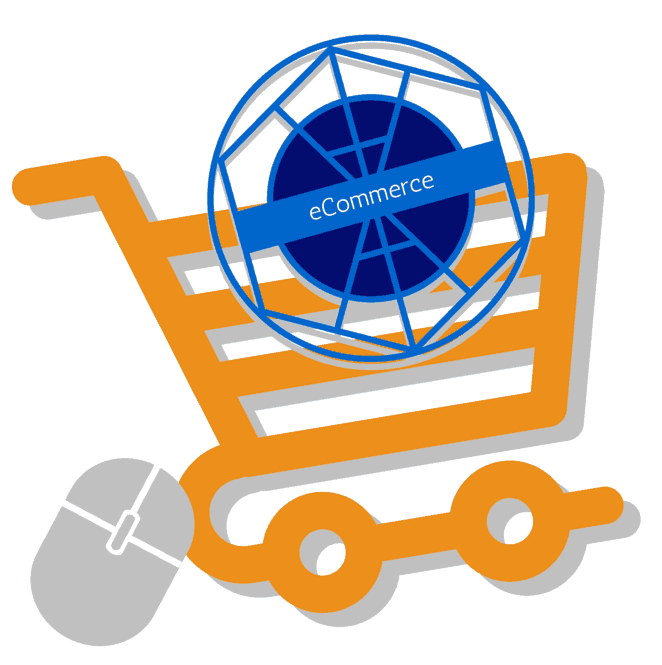 I recently attended a HubSpot User Group meeting in Denver, CO. Mike Vittum from HubSpot was the guest speaker and he presented an awesome session on Inbound Marketing and landing pages. I met quite a few HubSpot Partners and HubSpot clients at the event, and while making introductions with my new acquaintances, I realized something: most of the customers and agencies at the event were B2B (non-eCommerce) focused. This wasn’t really that surprising since most of HubSpot’s focus has been on lead generation clients. Most of them were quite fascinated when I mentioned one of Inflow’s specialties is Inbound Marketing For eCommerce. Reactions ranged from, “Wait, how do you do Inbound For eCommerce,” to “Oh, so you must work with a lot of promotions and discounts.” I realized that there is a lot of confusion about what exactly Inbound Marketing for eCommerce looks like and some low expectations on what it can deliver.
I recently attended a HubSpot User Group meeting in Denver, CO. Mike Vittum from HubSpot was the guest speaker and he presented an awesome session on Inbound Marketing and landing pages. I met quite a few HubSpot Partners and HubSpot clients at the event, and while making introductions with my new acquaintances, I realized something: most of the customers and agencies at the event were B2B (non-eCommerce) focused. This wasn’t really that surprising since most of HubSpot’s focus has been on lead generation clients. Most of them were quite fascinated when I mentioned one of Inflow’s specialties is Inbound Marketing For eCommerce. Reactions ranged from, “Wait, how do you do Inbound For eCommerce,” to “Oh, so you must work with a lot of promotions and discounts.” I realized that there is a lot of confusion about what exactly Inbound Marketing for eCommerce looks like and some low expectations on what it can deliver.
In a blog post from 2012, Relevance defines three types of Inbound Marketing for eCommerce:
1. Traditional Inbound (Learn More/Buy Later)
This type of Inbound is great for eCommerce where there is a high degree of consideration before purchasing. For example, tools, electronics, hobby gear and more can require a great deal of research and investigation before making a purchase and can make great use of traditional lead generation Inbound concepts like content offers and lead nurturing.
2. Product-driven Inbound (Buy Now)
This type of Inbound is more for the spontaneous purchases or low consideration buying cycles. Examples include some types of fashion, home goods, commoditized accessories, etc. While more traditional Inbound tactics can be creatively used, generally there is less focus on lead nurturing and deep content offers. Incentives, customer service, and traditional PR are more commonly seen helping to grow these brands.
3. Hybrid Inbound (Learn More or Buy Now)
Hybrid Inbound combines characteristics from Traditional Inbound and Product-driven Inbound such as lead capture and nurture and promotion-based marketing such as retention discount offers. I would argue that most eCommerce websites, no matter high or low consideration, fall into this category, or could and should model their business and marketing to fit into this category.
Let’s look at how Inbound Marketing for eCommerce, using the Hybrid Inbound approach, compares to Lead Generation Inbound Marketing across these four actions.
HubSpot defines Inbound Marketing as having four actions that marketers must take in order to obtain visitors, leads, customers, and promoters.
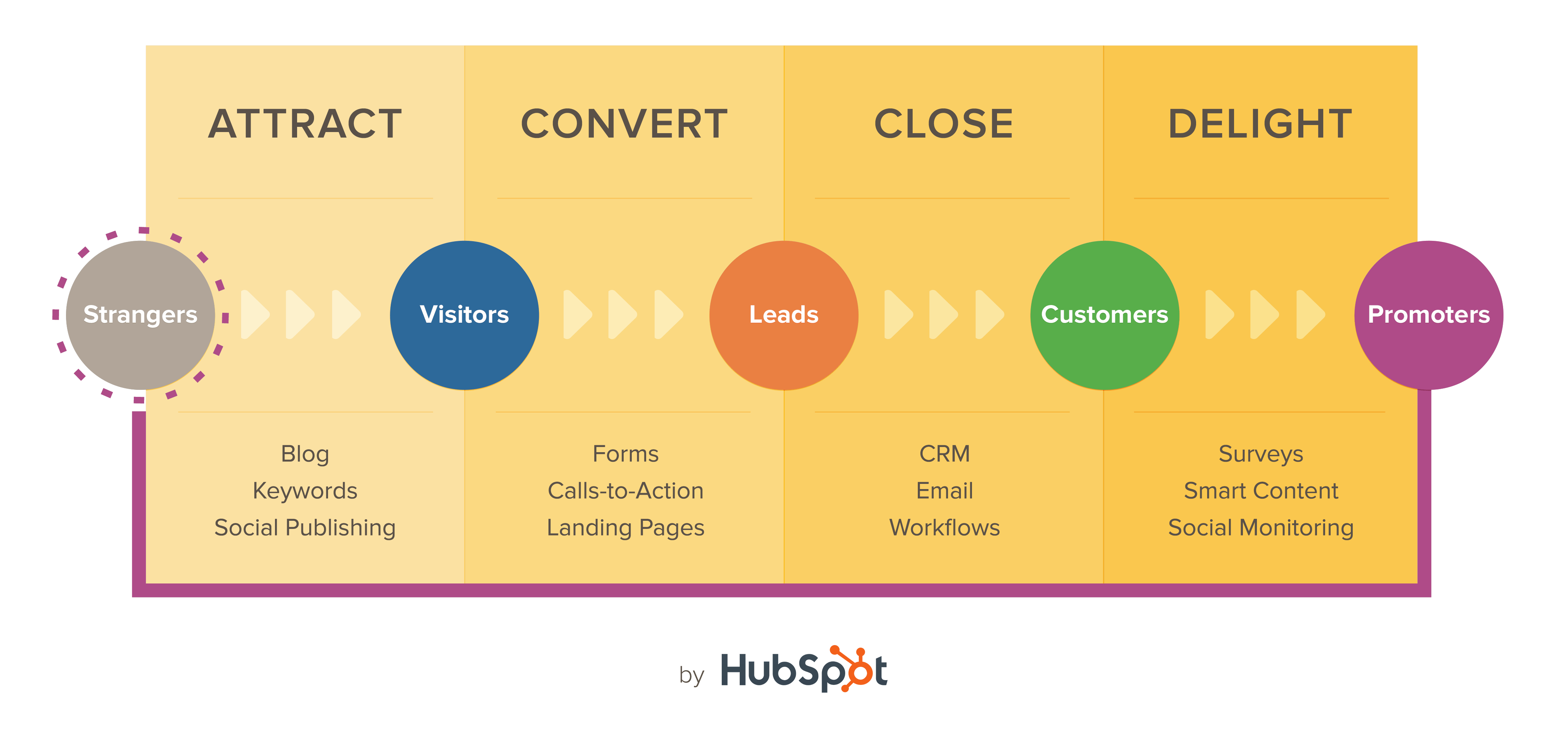
Attract
As with Lead Generation Inbound Marketing, eCommerce Inbound Marketing comes with a heavy dose of SEO to help attract organic traffic from the search engines. eCommerce Inbound requires a much heavier dose of “foundational SEO and content” since typically, eCommerce sites feature pages for each category of product they sell, as well as product pages for every product sold. Ignoring these pages from an SEO and content marketing perspective can cause issues ranging from search engine penalties, to low engagement and low conversion rates. Other similarities with Inbound for Lead Generation include attracting traffic through social media, relevant email blasts to homegrown lists and high-quality active blogging. For lower consideration buying cycle stores, blogging and content marketing usually include lifestyle content such as style guides, look books and more.
Convert
The Convert action in Lead Generation Inbound is the process of getting a website visitor to convert into a lead. With Hybrid Inbound for eCommerce, this action can take the same form or a more “general” form of getting a visitor to sign up for an email list in order to stay “top of mind” via relevant email blasts, etc. A good marketing automation tool can help track activities of prospects and customers alike, taking specific actions based on visitor behaviors.
Some other tactics commonly seen as part of this action include paid remarketing. While paid advertising isn’t considered by some Inbound purists to be part of traditional Inbound Marketing, we’ve seen fantastic results and very creative and personal approaches to remarketing. If the visitor you’ve worked so hard to attract doesn’t convert into a list member or customer, remarket to them with an offer to join your community or subscribe to your content. If they convert to a list member but not a customer, again remarket to them with messaging to drive a conversion to a customer. Don’t simply rely on email for converting and closing.
Close
The Close action of Lead Generation Inbound typically is about getting the lead to close into an actual sale. In many cases a Sales Team is included, many meetings and calls are had and a contract is generated and hopefully signed. While a sale still needs to be made with an eCommerce website, typically the entire transaction is happening online and can happen at any time of day or night. Your website is truly your sales team with Inbound eCommerce and needs to be treated as such. Conversion Optimization—in order to improve trust, remove friction, answer questions and more—should be in deep practice.
Another huge piece of the Close action, as it relates to eCommerce Inbound Marketing, is retention marketing. Replenishment campaigns, win-back campaigns, relevant product offers, cart abandonment programs and other retention campaigns are key to closing more sales with eCommerce. This again is where a marketing automation system can really be effective.
Delight
Delight is the least specific action of the four Inbound Marketing components comprised by HubSpot. The objective of the Delight action is to turn customers into promoters. With eCommerce Inbound Marketing, this means implementing tactics like sending customers follow-up information on how to get the most from their products, implementing phenomenal customer support, requesting post-purchase product or brand reviews, engaging with customers on social media and more.
In addition to having the four actions of Inbound Marketing in common, there are a few other characteristics where eCommerce Inbound Marketing and Lead Generation Inbound Marketing share similar traits.
Remarkable User Experience
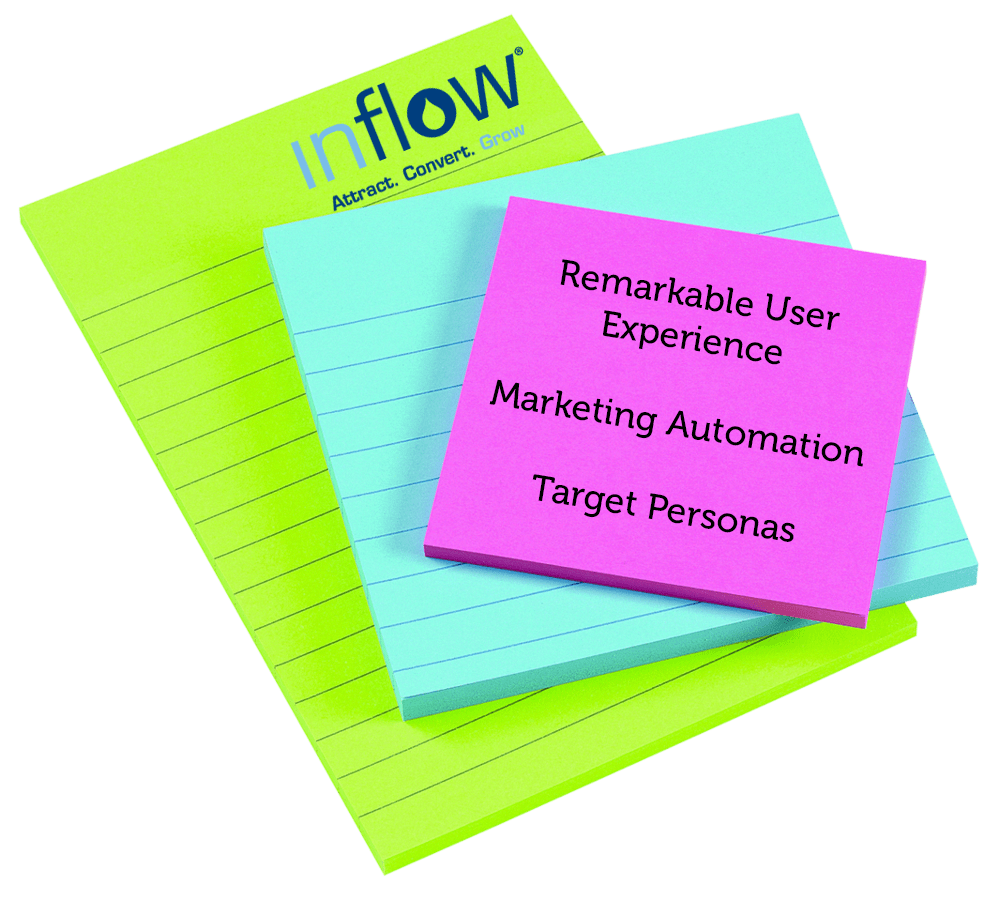 First and foremost to truly do Inbound right, the marketing team’s focus and the brand’s focus must start with the customer. Whether a full eCommerce experience or not, there must be something remarkable about the brand, the product and the experience the customer engages in while researching, browsing, shopping, purchasing, and ultimately owning the product. You’re on the right track when the process starts with building personas and truly understanding the audience. Purposefully creating the “little wows” along the buyer’s journey is how to make your brand successful with Inbound eCommerce. You are not just selling products anymore; you are selling an experience. If you think having low prices or having been in business for a long time makes you remarkable, think again. Lots of sites have low prices. Lots of them have been around for a long time. Lots of sites have huge product selections. Remarkable goes deeper than these common value propositions and is what connects your brand to its core customer. Attention to the little details, extraordinary customer service, commitment to shared values–these are the types of things that will set your brand apart.
First and foremost to truly do Inbound right, the marketing team’s focus and the brand’s focus must start with the customer. Whether a full eCommerce experience or not, there must be something remarkable about the brand, the product and the experience the customer engages in while researching, browsing, shopping, purchasing, and ultimately owning the product. You’re on the right track when the process starts with building personas and truly understanding the audience. Purposefully creating the “little wows” along the buyer’s journey is how to make your brand successful with Inbound eCommerce. You are not just selling products anymore; you are selling an experience. If you think having low prices or having been in business for a long time makes you remarkable, think again. Lots of sites have low prices. Lots of them have been around for a long time. Lots of sites have huge product selections. Remarkable goes deeper than these common value propositions and is what connects your brand to its core customer. Attention to the little details, extraordinary customer service, commitment to shared values–these are the types of things that will set your brand apart.
Marketing Automation
When it comes to doing Inbound Marketing right, marketing automation is a must have. As you can see above throughout the actions, marketing automation can create possibilities, efficiencies and customer experiences that are just not possible without it. There are a plethora of marketing automation platforms and they vary greatly in features, price and integration ability. I’ll cover marketing automation for eCommerce in an upcoming post.
Target Personas, Not Just Keywords
Another commonality between eCommerce Inbound Marketing and Lead Generation Inbound Marketing is the practice of marketing to actual people represented by personas, rather than just trying to rank for important keywords. This means optimizing for problems people are trying solve and pain points they have. It also means delivering these solutions in a timely manner through the buyer’s journey in the format that makes the most sense for the customer at that stage.
Whether It’s B2B or eCommerce Inbound Marketing…
While there are some significant differences between eCommerce Inbound Marketing and Inbound Marketing for lead generation, they both share many of the awesome actions and characteristics of Inbound Marketing.
How do you apply eCommerce Inbound Marketing to your store? Do you have any other examples of great eCommerce Inbound Marketing? Do you even see a difference in Lead Gen and eCommerce Inbound Marketing? Sound off and let us know!





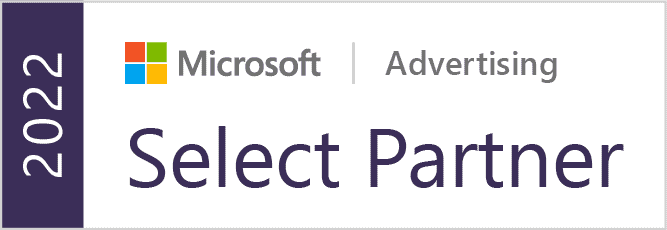



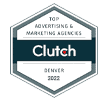

0 Comments